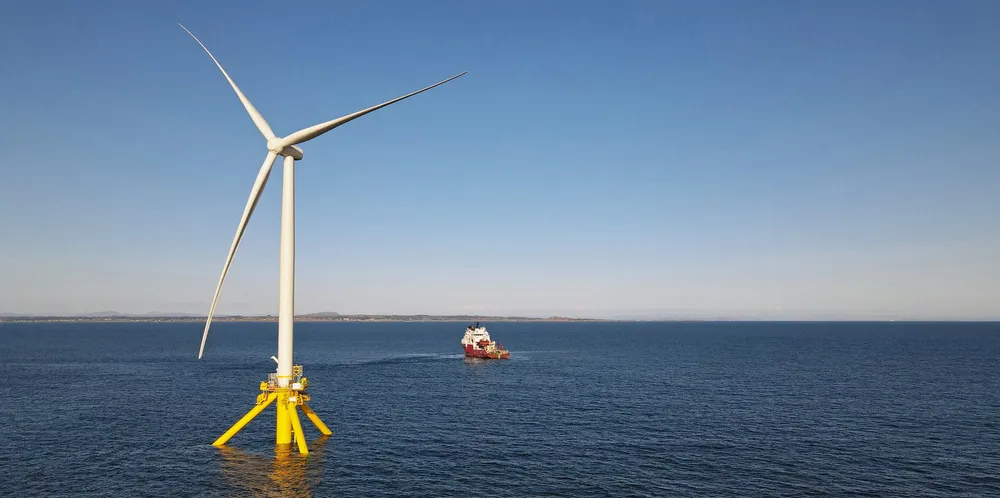'The project was a challenge': Shell-backed TetraSpar set for sea-trials off Norway
Innovative next-generation desing from Stiesdal Offshore Technologies in commissioning off Norway following hook-up by contractor Bourbon

The innovative next-generation TetraSpar floating wind power concept devised by industry pioneer Henrik Stiesdal is safely anchored off Norway, soon to start sea-trials.
Installation contractor Bourbon Subsea Services (BSS) reports the unit, which is topped with a 3.6MW Siemens Gamesa turbine, is now hooked-up to a pre-laid mooring lines and power cable in 200 metres of water at the MetCentre testing site off Karmøy, in the west of the Nordic country, and set for final commissioning “in the coming weeks”.
BSS has installed a large number of the floating wind turbines in Europe, ranging in nameplate up to 8.3MW, including the first array to be moored in the Atlantic, WFA, now operating off Portugal.
Stiesdal said: “We value the expertise of Bourbon engineers. Their experience with floating wind is already impressive and with Bourbon’s contribution, we and our partners have been able to execute the cable installation safely and within budget.”
Patrick Belenfant, BSS’s CEO, added: “Each new technology needs creativity and innovation to mitigate risks and deliver in time.
“This project was a challenge, and we are very proud to have taken it up for TetraSpar,” adding the company was “looking forward to the pre-industrial floating wind farms [set to be installed in the coming years], particularly in France, UK, Portugal, Spain, Norway, Japan and South Korea.”
The design has be conceived as fast-track solution, with elements for its tetrahedral tubular steel platform engineered for factory-fabrication and quayside assembly.
The first generation of floating wind power units now in service used designs borrowed-in from offshore oil & gas, namely semisubmersibles and spar-buoys. But new concepts now being prototyped have been ‘clean sheet’ engineering projects devised with mass-producibility as well as at-sea stability and high capacity power production as their lodestars.